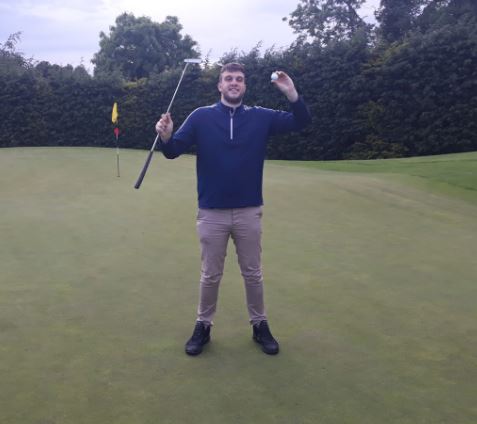Rangefinder Vs Golf GPS – Which One Should I Buy?

Remember back in the day when your only way of knowing distance was by eye and experience? Maybe you’re too young for that, what about Strokesavers? Or scrambling to find what yardage markers are out on the course.
When you find those markers you then need to find out if the yardage is to the front or the middle of the green, it was so complicated. Well, that was until rangefinders came along. These wonderful devices have transformed how we navigate golf courses today.
You then need to consider whether you want the handheld laser rangefinder or the GPS watch. Each version has its own advantages and disadvantages, only you can decide which will suit you best. Do you want the same point of view that the golfing gods have or do you want that control of seeing each shot as you do?
Give your game a laser boost: The rangefinder
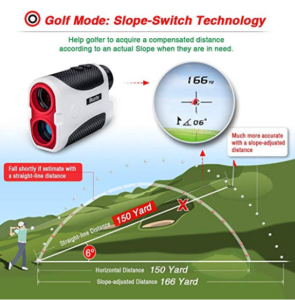
Rangefinders have been used for some time in the military and hunting worlds. They have been used for helping sharpshooters zero-in on targets. Why would you not want that in your game?
Think about it, shooting and hitting a golf ball have very similar processes before execution. So how does it work?
You look through the eye-piece and find your target. This may be the pin or any other thing that you want to know the distance you are from. You hold the rangefinder steady and you hit the button.
This is when it gets interesting, at the press of that button, laser beams are pulsed out in the direction of your aim. The beams shoot out at the speed of light and are reflected back toward you. Those reflected beams are then picked up by the detector which sits just below the emitter.
The time for the beams to come back is recorded and from this the distance can calculated using some high school physics equations. The distance is flashed up on the screen inside the rangefinder and you are all set to pick your club.
It’s so easy that a kid could do it. These really are fantastic pieces of kit and they can save you many shots on the course. I was always amazed when I first started using one at how off my own judgement of distance could be.
Show the world you’re a golfer every day: The GPS watch
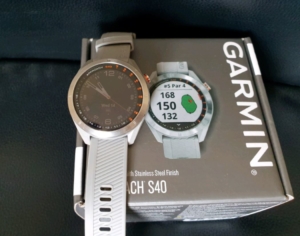
It’s maybe not one to boast about on a first date, but the GPS watch is a great alternative to the rangefinder. These can be worn in everyday life and many are even smartwatches now. Like a golfing James Bond, you know your watch has special powers yet most of the general public have no idea.
The special power is the ability to save golf shots every round and avoid hazards like Bond avoids bullets from evil henchmen. Using the incredible power of GPS (Global Positioning System), these watches can pinpoint your location on the course and help you navigate your way around it.
How does GPS work, you may ask? Well it uses a system of three inter-connected satellites and your position in relation to them all. By triangulating (a fancy way of saying comparing where you are to each one simultaneously) your position, then the position of various points of interest on the course, the whole system works. You get all the distance data you need to play better golf.
These systems are most helpful on courses with lots of blind holes or ones that you’ve never played. They are also more akin to the old-fashioned Strokesaver-type idea. In fact, you can think of them as real-time and living course maps.
Why choose the rangefinder over the GPS watch?
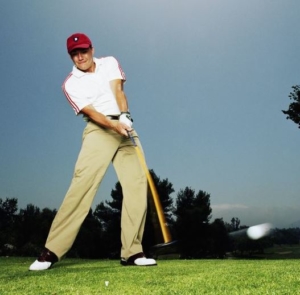
Firstly, the rangefinder gives you accurate data for each shot you are about to hit. You are standing at your ball and you can find out exactly how far you are from the pin. The GPS watch can only give you the distance to the front, middle and back of the green, although some allow manual locating.
This literal pin-point accuracy, excuse the pun, means that you can take all of the guesswork out of those approach shots. This is my own personal preference but it is only valuable if you know your club yardages well. For the average golfer who only knows their yardage roughly, this isn’t such an advantage.
With slope compensation, which is banned during competitions, you can also learn the effect that elevation change has on yardage. This feature tells you the distance to the pin, but given the height difference between you and the pin, it can tell you how far the shot will actually play. This is a huge advantage, hence why it is banned.
Finally, the GPS watch is only useful if the course you are playing is on the database and up to date. If changes are made to the course and it hasn’t been updated then you may miss things you would want to avoid. This is not nearly as much of a problem as it used to be but it is worth noting.
Why choose the GPS watch over the rangefinder?
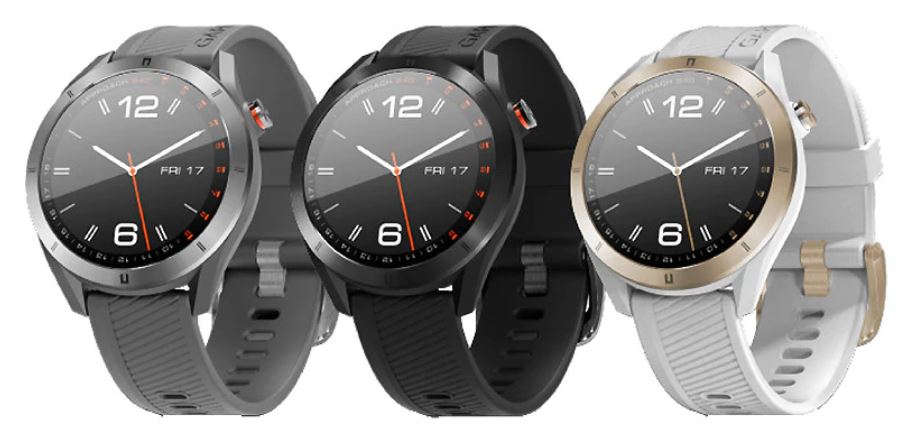
Was the James Bond analogy not enough? Well if not, there are a few reasons that give the watch the edge, the knowledge of your yardage mentioned above is one. They are also a little easier to use in bad weather.
Imagine playing in near-hurricane conditions and having to try to hold the rangefinder steady to get your yardages. That can be even harder than keeping your wedges under the wind at times. With the watch, you just have a look at your wrist and you have all the information you need.
Also, as I have touched on before, when you’re playing a course you don’t know, this bird’s-eye view lets you see everything in front of you. You can see the hole before you’ve played it and build your strategy as you go. This is also an advantage on course with many blind holes like doglegging tee shots.
Another potential issue with rangefinders is the problem of missing the flag. Bushnell rangefinders vibrate when you hit the flag but if you miss and take a yardage reading for the trees behind the green…well you can see the issue there.
These are good looking lifestyle pieces that can be word both on and off the course. This means that you will get more use out of it than just whilst you are playing. These can keep track of your steps and health data too, like many smartwatches on the market.
The old belt and braces technique, what about using both together?
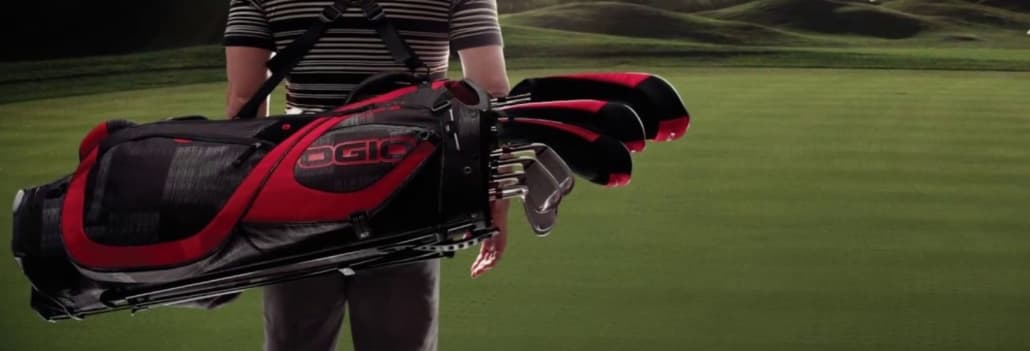
Given the comparative advantages and disadvantages that each of the technologies bring to us golfers, could you use them both together? Well, yes and an increasing number of golfers are starting to do just that.
Using both together gives you that great data for every single shot with a “golfer’s-eye view” coupled with the bird’s-eye view of the GPS. You can also use the front, middle, and back information to pick out portions of the green to aim your ball at. This is particularly important on courses with large greens.
This is an expensive way of getting a bit more information. It is really something for those who demand the most data for their game, it is probably a bit much for the average golfer. However, if people like to buy you golf gifts and you happen to have both, you will still benefit from having this double-technology.
Is this all legal? Can I use rangefinders and GPS watches in competition?
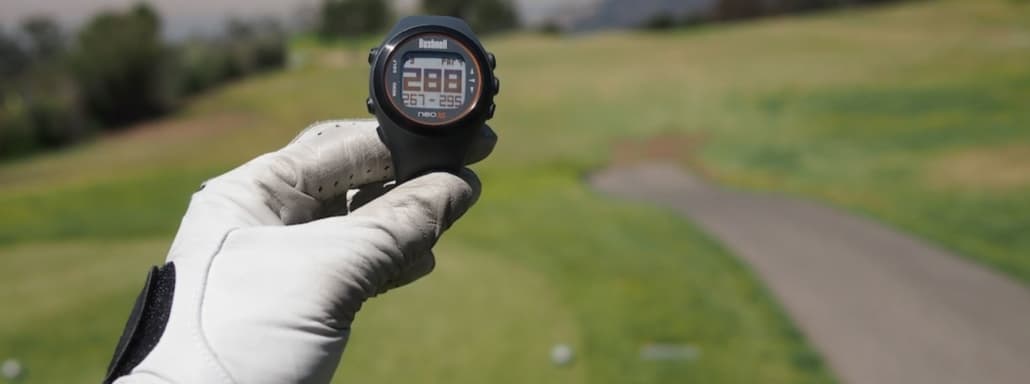
Almost always, yes! When you are playing in normal club competitions, these are perfectly fine to be used. It is worth checking before you tee off for the first time with one but 99% of the time it is allowed. There are some exceptions you need to be aware of though.
Firstly, I have already mentioned it but the use of rangefinders that give slope readings are illegal. These just give you too much of an advantage. Some models are available that allow you to enable and disable this feature.
It may be worth getting one of them as you can use it during normal rounds and learn how slope effects distance. Then you can just turn it off during competitions.
Another time when you can’t use rangefinders or GPS watches is during competitions run by the Royal & Ancient Golf Club (The R&A). These include some of the most prestigious events in the world like The Amateur Championship and they will make it very clear to you that they are not to be used.
Who makes the best rangefinders?
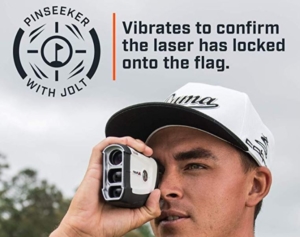
There are a few new companies entering this market now. This is causing the price of these products to drop a bit and that’s perfect if you want to give one a shot with less risk. Here are some of the best.
The leading brand in this product area started life as a shooting company. Bushnell make the best rangefinders on the market and their price reflects that. They are the most expensive, but they are in most tour player’s bags so take from that what you will.
They have ‘Jolt’ technology so that when you lock on with the target the display flashes in red and the rangefinder vibrates. This is an excellent feature. In many of them too, you can switch from slope readings to normal readings whilst in competition.
Another really strong brand in this area is Nikon. This world famous optics company who make some of the finest cameras in the world also make some of the best rangefinders on the market. Their latest product for 2019, the Coolshot 20GII is their best yet and the 6x zoom makes it so easy to see your target.
These two companies have been battling it out for years but there are some newcomers. Garmin, the GPS company have decided that they want to try and get involved in this technology too. This one has a great trick up its sleeve, it has built-in GPS.
That’s right, the Approach Z80 gives you the usual heads-up display through the eyepiece and the distance whilst displaying a GPS view of the hole. This is the best of both worlds and a real piece of innovation.
Other new companies include GolfBuddy, EasyGreen and Precision Pro. These are perfect as they work very well whilst costing a bit less. You can try this out and make sure you want this technology before spending too much.
Who makes the best GPS watches?
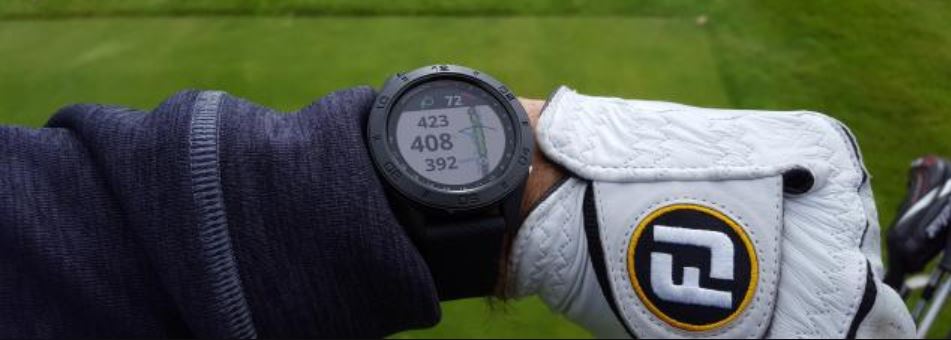
A few more decisions need to be made if you are getting a GPS watch. Do you want one you can wear all of the time or just for the course? There are so many available that you will certainly find one you love.
They’ve given us a shock by appearing on the rangefinder list, but Garmin make some of the best GPS systems in the world and their golf stuff is no different. Their watches also allow you to track your fitness activity for those who enjoy a run as well as a round.
The Approach S60 from Garmin has some great features. You can keep your score on your watch and upload it to a database to track your stats. There are so many things this watch can do and more importantly, it looks great so you’ll want to wear it on and off the course.
For true golf lovers, it is hard to look past the ShotScope V2. This watch enables you to collect stats on your game that you just cannot believe. You get the yardages to help navigate the course but the other features are astounding.
You are given tags for your clubs, then when you play a shot, the watch knows what you’ve played. Matching that to GPS data, you see exactly how you played, where you gained and where you lost shots. This is the ultimate bit of kit for those wanting to learn about their game.
Finally, if you just want to keep things simple and get easy to use information in an effortless way, the Bushnell ION 2 is the one for you. This watch is very affordable and couldn’t be easier to use. Yardages are displayed prominently on the screen and the course is picked for you automatically, just strap up and tee up.
Other brands are available here like SkyCaddy, TomTom and even Callaway have got involved with their own. You just need to look and see which you think looks best and gives you all of the information you need.
Go and speak to your friends who have them and look at them in golf shops. Speak to pros and look at reviews on the internet. You will know the right one when you see it and put it on your wrist.
Rangefinder, GPS watch or launch monitor?
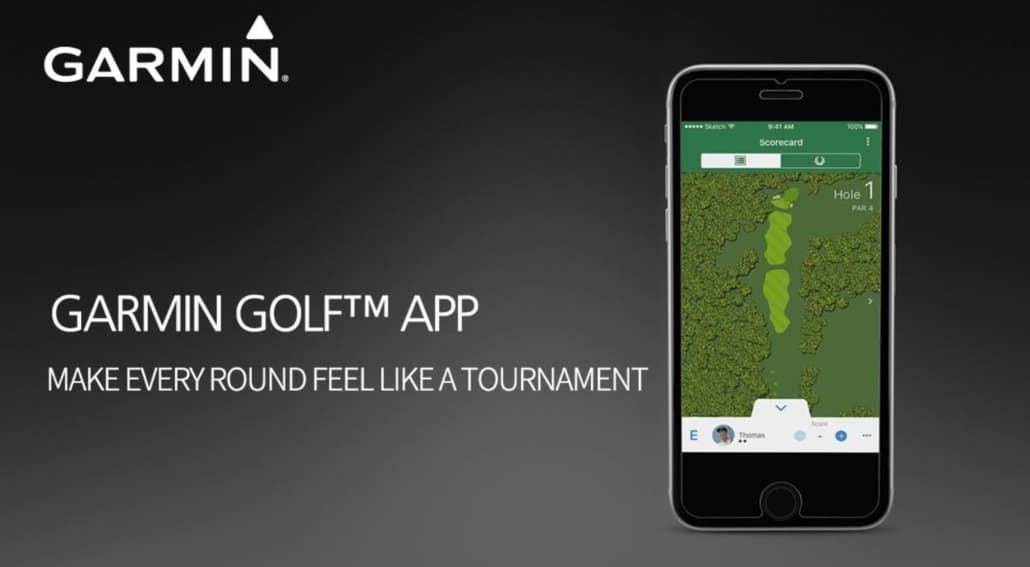
Well this is an easy one to answer. Every regular golfer should have a rangefinder or a GPS watch in their bag. They are too helpful not to have one if you are any way serious about your golf game.
However, in order to actually be able to use one properly, you need to know how far you hit each club. That’s where the launch monitor comes in. I think you should buy the rangefinder or GPS watch and at least have access to a launch monitor.
You should check your yardages every few months or any time you get a new club. Then take that information on to the course and let your rangefinder/GPS watch do its work. Buying a launch monitor is a great idea for those looking to be an elite golfer.
They will help you fine-tune your shot-making ability. They will teach you how to control distance better than ever.
However, so you can play well, you just need to know how far each club tends to go. Get yourself on a launch monitor and learn your game. This data can be used on the course with your new distance calculator.
Conclusion: who wins?
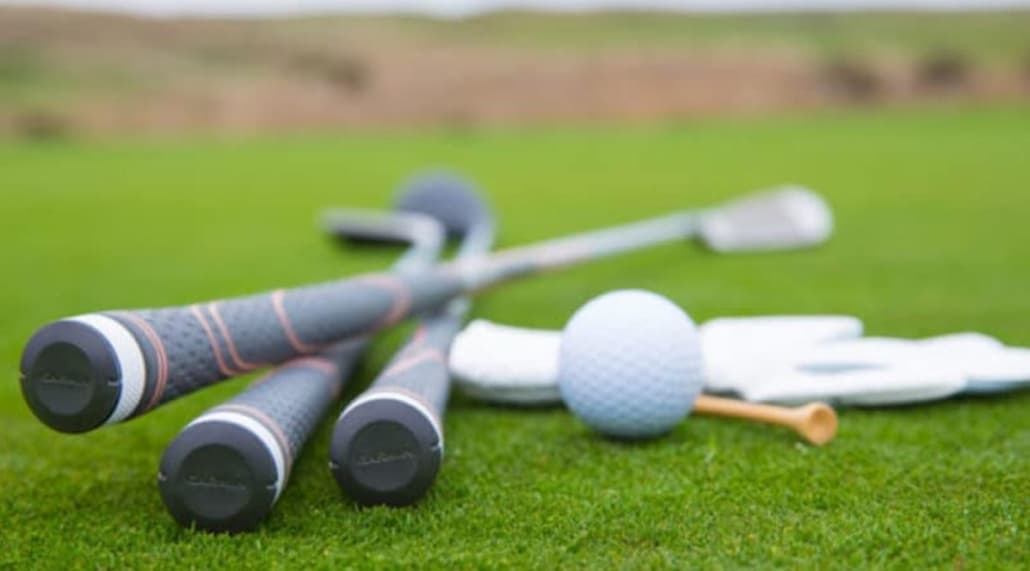
Well the winner is the one that you like best. I am just here to tell you what your options are, you need to figure out which will fit your game best. Each type of technology has pluses and minuses and that’s a compromise only you can navigate.
The most important thing is that you get one or the other. You will instantly start to save at least a couple of shots when you use this technology. You will stop leaving the ball short of the green so much because you chose the wrong club.
You will hit fewer greenside bunkers because you will have the correct club in your hands. Obviously these can’t stop the mishits that leave you short but come on, they aren’t miracle devices. Seriously, get yourself something like this, it will revolutionise your game.
Your average score will come down and you’ll enjoy your golf more. What else could you ask for?
***Best Entry Level GPS Watch – The Garmin S20***
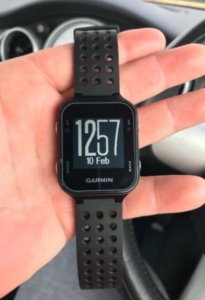
Get The Best Price Here:


